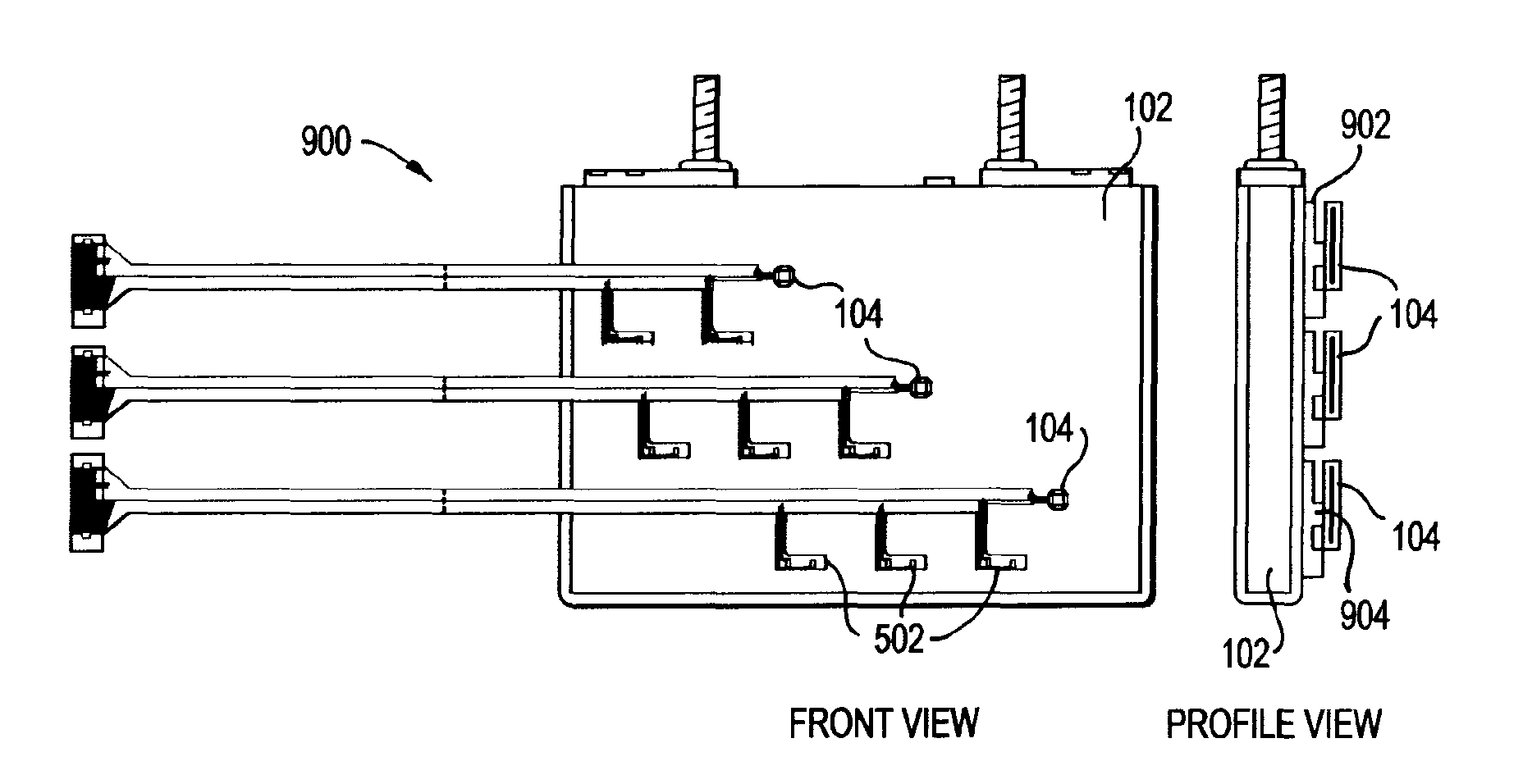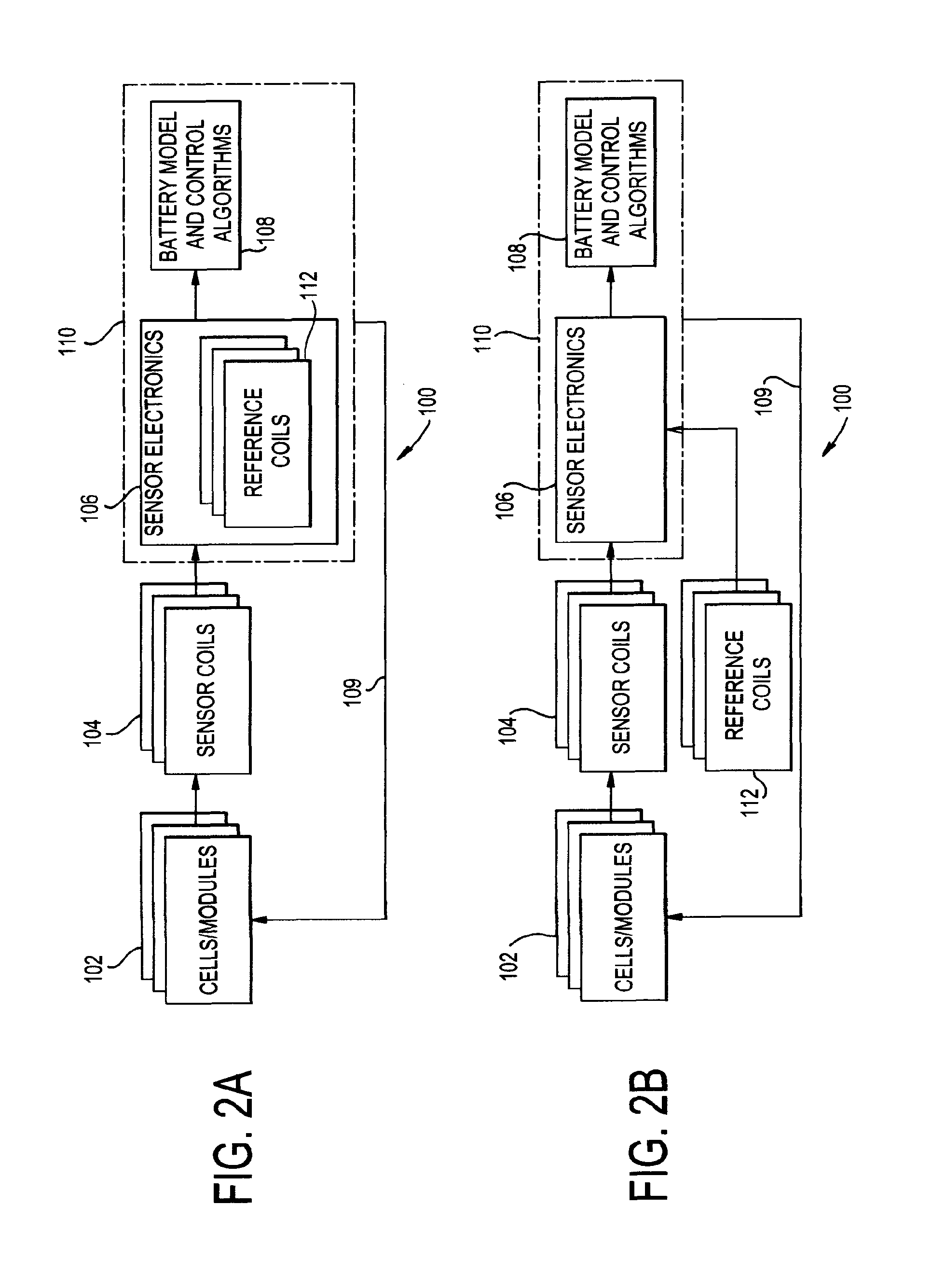Battery cell health monitoring using eddy current sensing
a battery cell and eddy current technology, applied in secondary cells, battery servicing/maintenance, instruments, etc., can solve the problems of reducing the value of the approach, unable to accurately measure the deflection of the battery in-situ, and incurring error on the overall measurement, etc., to achieve the effect of cost reduction, high cost of the interrogation system, and high accuracy
- Summary
- Abstract
- Description
- Claims
- Application Information
AI Technical Summary
Benefits of technology
Problems solved by technology
Method used
Image
Examples
first embodiment
[0037]A first embodiment is illustrated in FIGS. 2A and 3A, where the sensor electronics 106 may include at least one reference coil 112. Reference coil(s) 112 are typically identical to the sensor coil 104 in either manufacturing or nominal value of inductance and resistance and are used as a baseline to measure the change in sensed gap between the battery cells 102. Specifically, the reference coil 112 provides a reference voltage which accounts for common mode noise in the system. In operation, the reference coil 112 accounts for common mode noise, where environmental changes that would affect both the sensor coil 104 and the reference coil 112, such as a temperature change, would not cause a change in the difference of the signals. As such, the reference coil 112 remains at a fixed position that does not move, while the sensor coil 104 is affected by displacement of the battery cell 102. In one embodiment as discussed herein, the sensor coil 104 is positioned on the wall of the ...
second embodiment
[0038]A second embodiment is illustrated in FIGS. 2B and 3B, where the reference coil(s) 112 may be located outside of the sensor electronics 106 and in proximity to the sensor coil(s) 104 so that it experiences the same environmental changes as the sensor coil(s) 104. In this second configuration 320, as illustrated in FIG. 3B, the reference coil 112 is disposed on or near a cell 102 in an area where the wall of the cell 102 is not moving relative to the reference coil 112 during charge or discharge, and thus not modulating the reference coil 112. For instance, the reference coil 112 can be built on the same substrate as sensor coil(s) 104, but spaced apart from sensor coil(s) 104. The reference coil 112 can be placed adjacent to the sensor coil(s) 104, though the distance to the battery cell 102 must be held constant so as to not be affected by displacement changes of cell 102, which would negate the changes sensed by the sensor coil 104. One method of doing so is to mount the ref...
PUM
 Login to View More
Login to View More Abstract
Description
Claims
Application Information
 Login to View More
Login to View More - R&D
- Intellectual Property
- Life Sciences
- Materials
- Tech Scout
- Unparalleled Data Quality
- Higher Quality Content
- 60% Fewer Hallucinations
Browse by: Latest US Patents, China's latest patents, Technical Efficacy Thesaurus, Application Domain, Technology Topic, Popular Technical Reports.
© 2025 PatSnap. All rights reserved.Legal|Privacy policy|Modern Slavery Act Transparency Statement|Sitemap|About US| Contact US: help@patsnap.com



